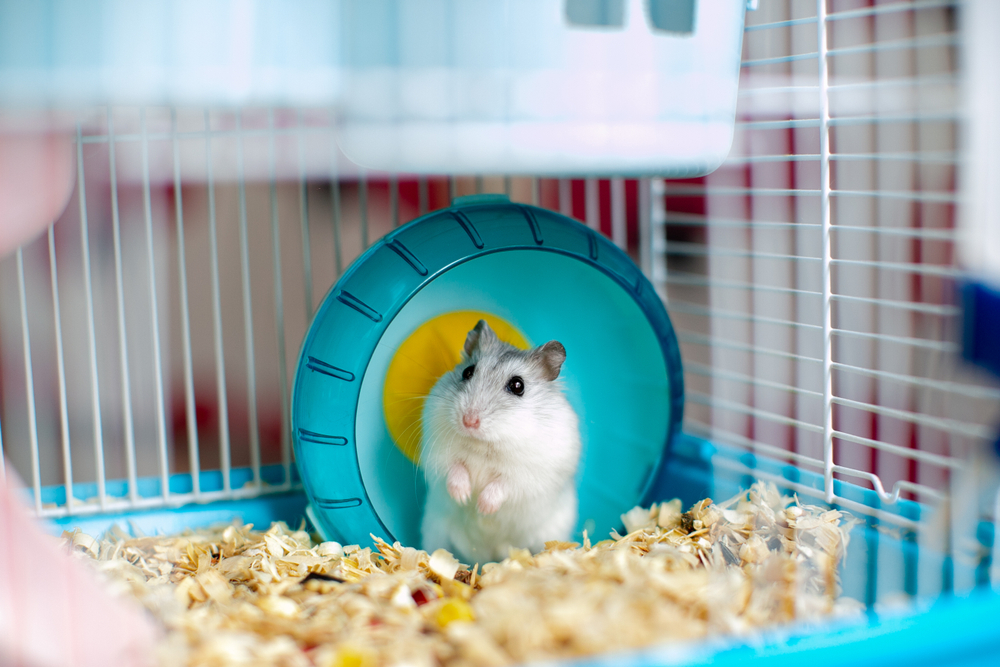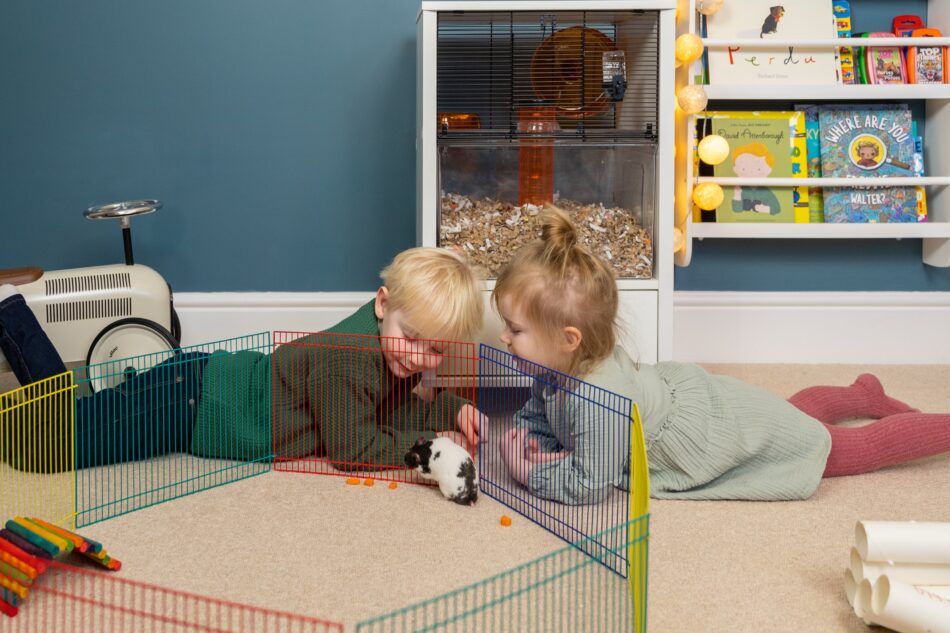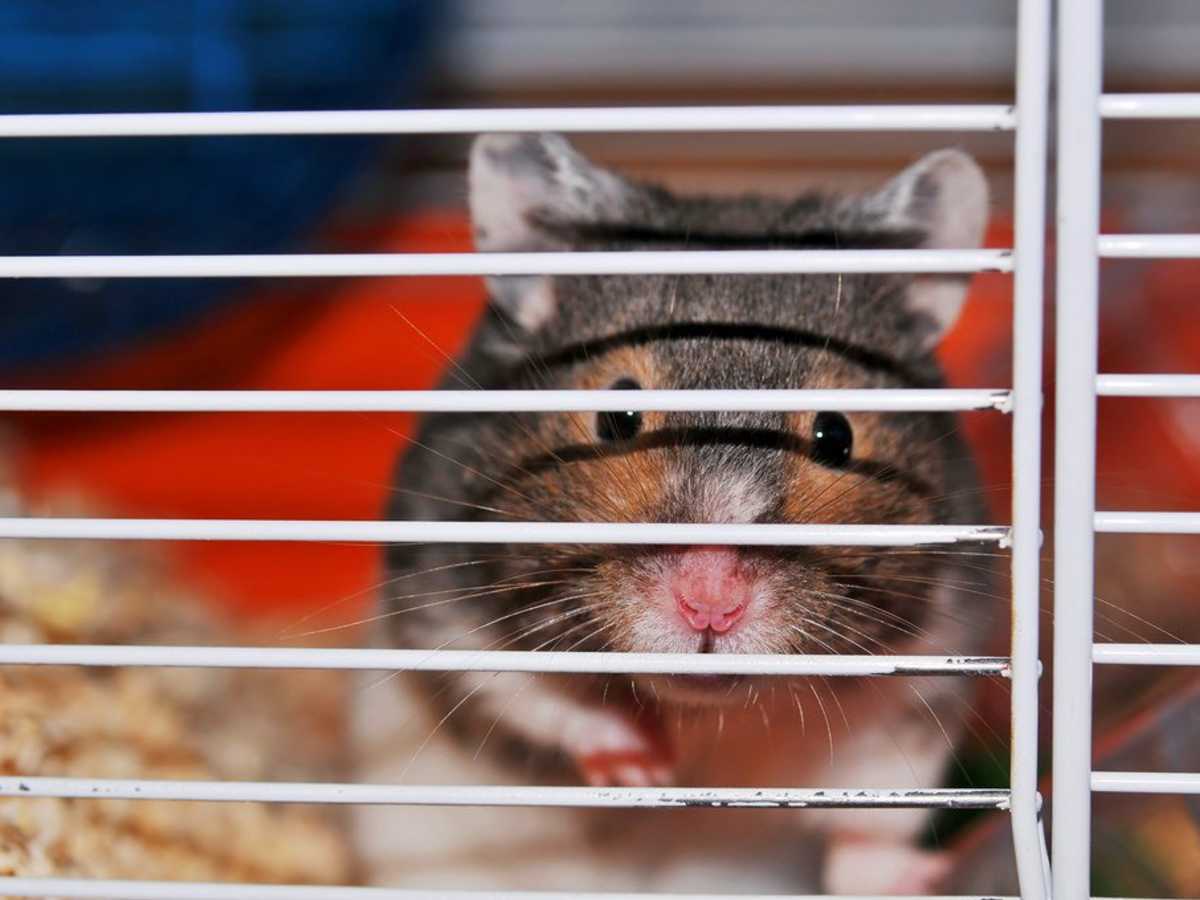As parents, we want to teach our children how to be responsible pet owners. One popular pet for young children is a hamster – they’re cute, cuddly, and relatively low-maintenance. However, it’s important that we not only teach our children how to care for their hamsters but also how to handle them safely. Kids can be easily excited and may not understand their strength, which can be dangerous for the fragile little creatures. In this blog post, we’ll discuss some tips on how to teach your child to handle their hamster safely and with care.

1. Use a cardboard box as a cage and treat the egg as a hamster.
Another helpful tip for teaching young children how to safely handle hamsters is to use a cardboard box as a cage and treat the egg as a hamster. This way, kids can practice caring for a hamster-like creature without actually having a real one just yet. However, it is important to note that cardboard should only be used for toys or nesting material and not as a long-term cage option for actual hamsters. It’s also essential to make sure the egg is handled gently to prevent any harm. By using this method, children can develop an understanding of how to care for a fragile, living creature without making any mistakes or causing harm. This will help them prepare for the responsibility of owning a real pet in the future.
:strip_icc()/ricky-kharawala-adK3Vu70DEQ-unsplash-0fd4bcb628bd49c88d8a023130132a7f.jpg)
2. Wash your hands with unscented soap before handling the hamster.
It’s important to teach young children about the proper ways to handle their pet hamsters. One crucial step in this process is to ensure that hands are washed with unscented soap before handling the furry critters. Hamsters have a powerful sense of smell, and can be distracted or even frightened by scents on your hands. By using an unscented soap, the hamsters can focus on getting to know their new handler without any distractions. This step can help the pet feel more comfortable and build a stronger bond with its owner. Additionally, using gloves at first can also help protect both the hamster and the child’s fingers. By taking these precautions, children can learn how to safely interact with their new pet and develop a positive relationship with their hamster.

3. Have your child wear gardening gloves at first to protect the hamster and their small fingers.
When teaching young children how to safely handle hamsters, it’s important to take precautions to protect both the child and the furry little friend. This is where wearing gardening gloves during initial interactions with the hamster comes in. It protects the child’s small fingers from accidental bites, while also protecting the hamster from getting too scared and biting. It’s best to start with small interactions and gradually build up to more involved handling. By doing so, the child and hamster are able to build trust and a stronger bond. As with any new pet, patience and a gentle touch are necessary to ensure everyone stays happy and healthy.

4. Start with an easy trick, such as teaching the hamster to stand.
Starting with an easy trick is always the best way to introduce a new pet to a child. In the case of hamsters, teaching them to stand is a simple trick that can be easily accomplished. To do this, the child should get the hamster to stand on its hind legs, and then move their hand up and forward in a gentle manner. Gradually, the hamster will learn to stand up on command, and the child will feel confident in their ability to train their furry friend. This trick also serves as a starting point for other, more advanced tricks such as jumping and spinning. By starting with simple tricks, children will develop a bond of trust with their hamster, which will make it easier for them to learn new things and enjoy their company.

5. Gradually teach your hamster more advanced tricks, like spinning in circles.
After teaching your child a few basic tricks, it’s time to move on to more advanced ones like spinning in circles. This trick ensures both the hamster and the child have fun. Start by holding out your hand with a treat in it and make a circular motion. Encourage your hamster to follow the treat with its nose, completing the circle. Repeat this motion until your hamster understands the trick. Be patient, and use positive reinforcements such as treats to encourage the hamster. Remember to always start with easy tricks, and gradually build up to more challenging ones. A well-trained hamster will be a happy and loved family member.

6. Get your hamster used to your voice before attempting to handle them.
Before handling a hamster, it is important to get them used to your presence and voice. This can be achieved by feeding them treats through the cage bars or talking to them in a soothing tone. Additionally, it is suggested to wait a week or so after bringing a new hamster home to allow them to adjust to their surroundings. Teaching young children how to interact with a hamster can be a great learning experience, but it’s important to first teach them how to properly care for the hamster and handle them gently. By getting the hamster used to your voice and smell, you are creating a positive association and increasing the likelihood of a successful interaction. Remember to always pick up the hamster with both hands, and support their bottom with one hand. By following these simple steps, children can enjoy the joy of owning a hamster while ensuring they are safe and well-cared for.

7. Teach your children about proper diet, and let them help select the right food for the hamster.
It’s important to teach young children about proper diet for their hamsters, and involve them in selecting the right foods. Hamsters require a balanced diet of pelleted food, vegetables, fruits, and occasional treats. Including your child in the decision-making process can help them learn about nutrition and responsibility, as well as create a stronger bond between them and their pet. Consider explaining why certain foods are important for hamsters, and have your child assist in measuring portions for their furry friend. By proper diet and good nutrition, hamsters can lead happier and healthier lives, and your child can learn valuable lessons about taking care of a pet.

8. Make sure your hamster has a stress-free transition to its new home by placing it in a prepared cage.
When bringing a new hamster home, it’s important to make the transition as stress-free as possible to ensure their well-being. One way to do this is by placing them in a prepared cage. A good-sized cage, with all the necessary equipment and accessories, will help your hamster feel more comfortable and secure. Also, the cage should be placed in a quiet location where there are minimal distractions to help them get used to their new surroundings. A new environment can be overwhelming and scary for them, so giving them time to adjust without any interaction for the first few days is essential. By providing a safe and welcoming space, your hamster will be happy, healthy, and ready to start their new life with you.

9. Teach children to be gentle and not to kick or roll the ball.
It’s important to teach young children how to handle hamsters with care and kindness. One important lesson to impart is the need to be gentle and avoid kicking or rolling the hamster ball. Rolling or kicking the ball can cause extreme stress to the hamster and harm its health. Instead, children should gently place the hamster in the ball for no more than 30 minutes at a time. Encouraging gentleness and respecting the hamster’s needs and boundaries will help create a safe and peaceful environment for both the pet and the child. This is just one of the many important lessons to teach when caring for a hamster.

10. Ensure that your hamster cage has a deep plastic base to accommodate their climbing and digging habits.
Ensuring that your hamster has a cage with a deep plastic base is crucial for accommodating their natural climbing and digging habits. As previously mentioned, hamsters love to climb and dig, and having a deep base will allow them to do so comfortably. This will also prevent any possible injuries that could occur from a shallow cage. When selecting a cage, it’s important to look for one with a gnaw-proof wire top and a base that’s at least 80cm wide x 30cm deep. Additionally, providing them with toys and areas to dig will stimulate their natural behaviors and keep them happy and healthy. By providing a suitable environment for your hamster, you’ll be ensuring they can lead a fulfilling life.
- understanding hamster body language - April 22, 2024
- In The Wild: Exploring The Lives Of Wild Hamsters - April 22, 2024
- Leaky Bladders And Urinary Woes: Understanding Hamster Urinary Issues - April 22, 2024